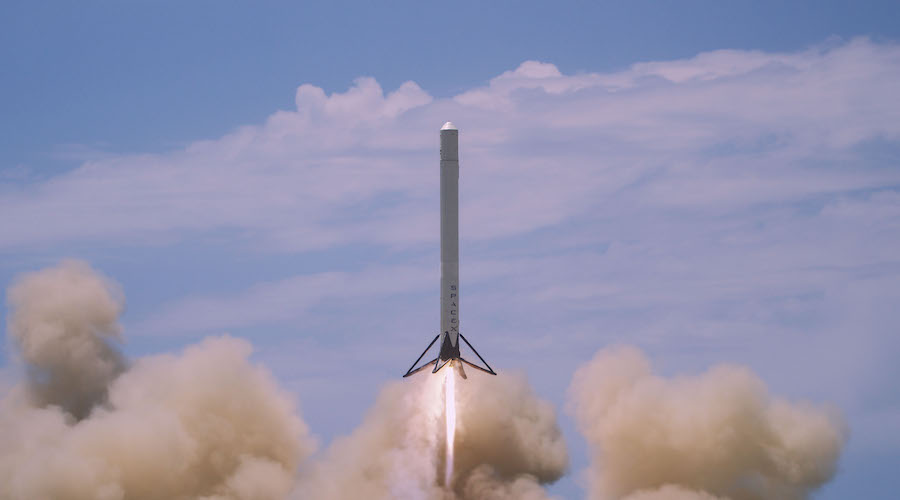SpaceX will soon try to land the first stage of a Falcon 9 rocket on an ocean platform in the Atlantic. The chances of success are estimated at 50 percent. SpaceX had initially planned to make the platform landing in mid-December but had to delay the launch and landing. The rocket will now attempt this impressive feat on January 6.
The Falcon 9 rocket is nearly 14 stories tall and capable of traveling at speeds of nearly one mile per second.
In talking about the landing, the company compared the maneuver to “balancing a rubber broomstick on your hand in the middle of a windstorm.”
The spaceport drone ship in which the rocket must land measures just 300 by 100 feet, with wings that extend its width to 170 feet.
While SpaceX has proven the concept with two soft water landings, it has never executed a precision landing on an unanchored ocean platform.
SpaceX is preparing to use the Falcon 9 rocket as part of an unmanned Dragon spacecraft mission to the International Space Station, much like they did in 2012. The Dragon spacecraft delivered nearly 5,000 pounds of cargo to the ISS in September.
To stabilize the Falcon 9 first stage and slow it down, SpaceX will relight the rocket’s engines for three different burns. The first burn, called the “boostback burn,” adjusts where the vehicle will land. The second burn, known as the supersonic retro propulsion burn, reduces the speed from 1300 m/s to about 250 m/s. In the last landing burn, the legs will deploy, and the vehicle’s speed will be further decreased to around 2 m/s.
In previous landings SpaceX was hoping for a 10km landing accuracy. This new landing will require a landing point with 10 meter accuracy.
SpaceX specifically designed the its Falcon 9 rocket to avoid burning up upon reentry. The idea is to safely land the rocket so it can be used for repeated flights. By reusing the multi-million dollar rockets, SpaceX can help commercialize space travel through increasingly lower costs.
Along with the three burn bursts, the company will also rely on four hypersonic grid fins that have heightened precision targeting of the Falcon 9 all the way to touchdown.
The rockets fins are placed in an X-wing configuration around the spacecraft. The fins can be witnessed in a June test flight. The fins are stowed on ascent and deployed on reentry to control the stage’s lift vector. Each fin moves independently for roll, pitch and yaw.
SpaceX will spend the next year testing more than a dozen launches. The company eventually hopes to land a Falcon 9 rocket and then re-fly the same rocket for testing purposes.
